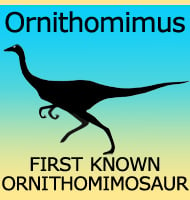Patagonykus
In Depth Although only known from partial remains, Patagonykus is confirmed to have been an alvarezsaur, small bipedal dinosaurs that are thought to have specialised in hunting insects. Dinosaurs like Patagonykus were once thought to have been restricted to the lower stages of the upper Cretaceous, however the discovery of Bonapartenykus in 2012 has revealed … Read more
